Solar Inverters: How They Work and Their Benefits
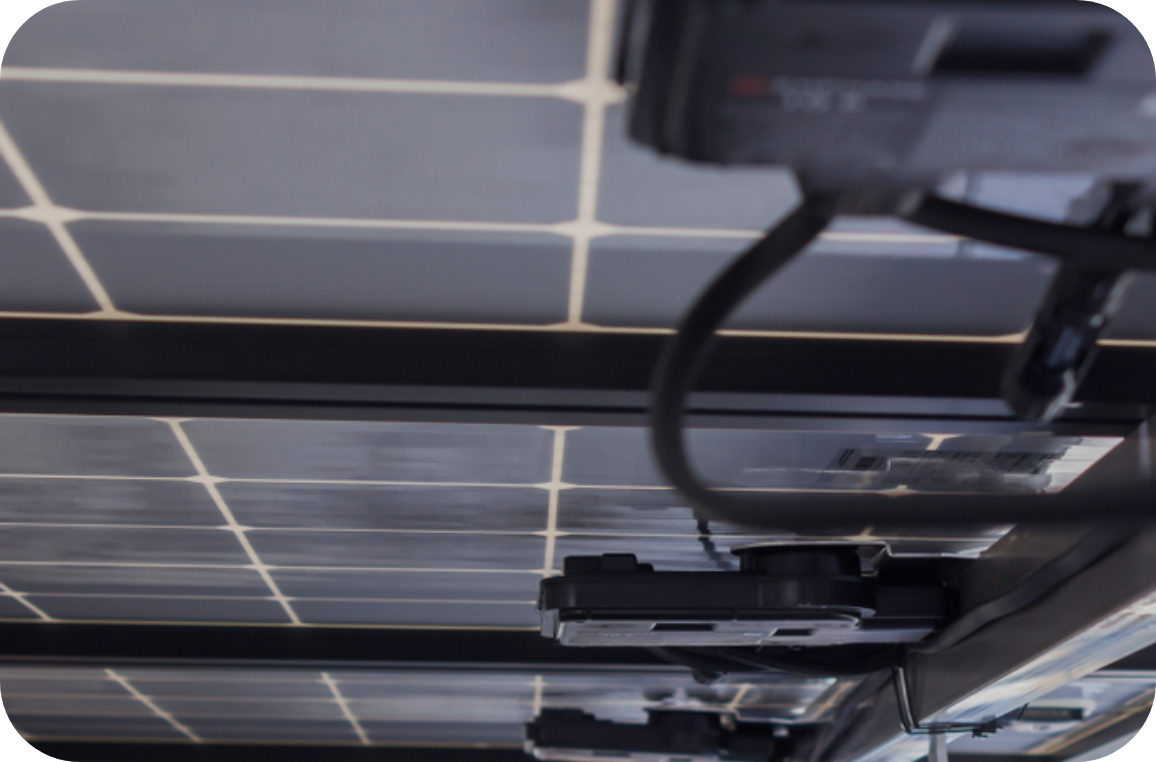
Over the last few years, solar has become one of the most popular renewable energy sources. This comes as no surprise, thanks to the sun’s amazing ability to power homes. But how does a solar system change sunlight into energy that can power an entire house? The answer is in its parts — solar panels and solar power inverters.
You may be familiar with solar panels because they’re more visible on a solar system than inverters. Though inverters are less visible, they’re just as important because they convert sunlight into electricity you can use in your home. We created this guide to help you learn more about solar inverters, how they work, and their benefits.
How a Solar Inverter Works
The primary purpose of a solar power inverter is to convert direct current (DC) electricity gathered by panels into alternating current (AC) electricity that you can use for your home. Most home appliances use AC power, meaning your solar power system has to transform the DC energy into the right electricity before your appliances can use it. The inverter is the powerhouse behind the conversion, allowing your solar system to provide electricity to your devices.
Your solar inverter is the middleman between the grid and your home. This is known as a grid-tie inverter, and it ensures your home has continuous power no matter how much electricity your panels generate. Grid-tie inverters are especially useful at night when solar panels aren’t producing electricity. Your home may rely entirely on grid energy during darker hours, but inverters can help mix grid power with stored energy in battery backups.
With solar power inverters, your home will have all of the energy it needs in any scenario, and you won’t notice a difference as it switches from grid to solar power.
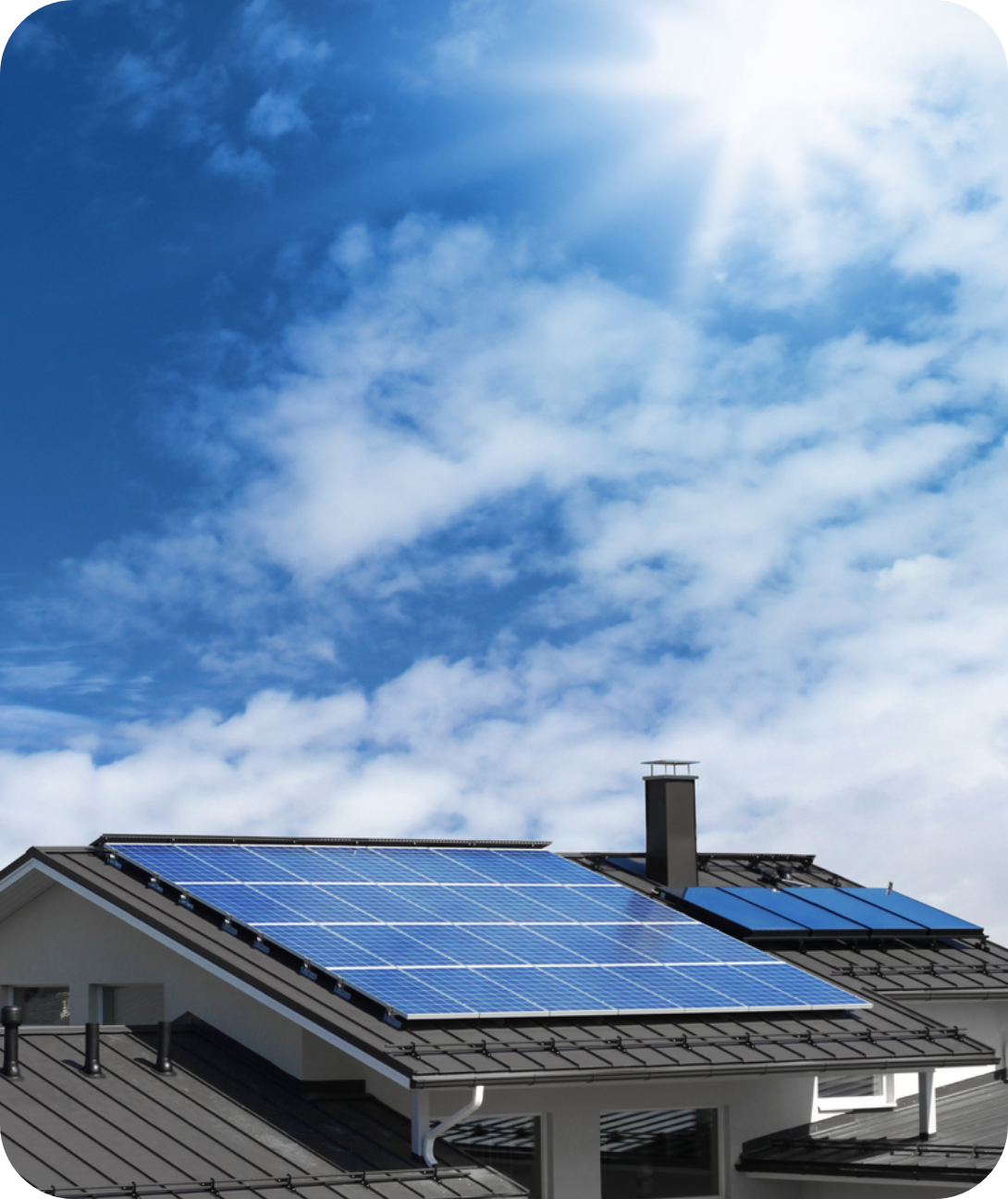
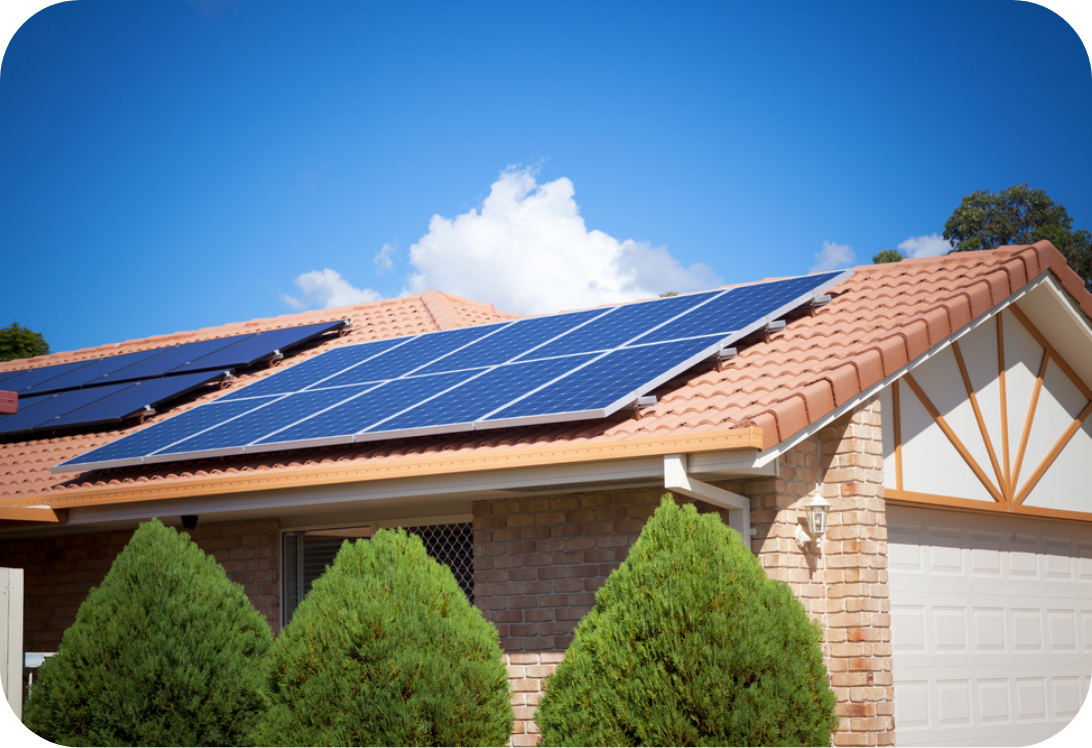
DC vs. AC Electricity
DC and AC electricity provide energy to your home differently. Electric charges flow only in one direction with DC electricity, while AC electrical currents flow in alternate directions. When sunlight hits your solar panels, it causes electrons in the solar cells to move in one direction, leading to the production of DC electricity. The current is collected by the circuits inside your solar panels and fed to the solar power inverter, which converts it into AC electricity your home can use.
Solar Inverter Benefits
Your solar power inverter helps you get usable energy from sunlight, but that’s not all it can do. Solar inverters can also optimize energy production, track energy output, communicate with the grid, and find faults that could damage your system.
Optimize Energy Production
Solar power inverters help you produce as much electricity as possible. They monitor your system’s voltage to optimize how the power in panels operates. Grid-tied inverters also provide a purer sine wave output than low-cost inverters that generate modified sine waves. In other words, they make sure your appliances work efficiently.
Track Energy Output
Many solar power inverters include a way to view how much energy they’re producing. Some inverters even let you track your whole system’s energy output with a website or mobile app. Using your inverter’s performance tracking, you can check each component to ensure your system generates enough electricity.
Communicate With the Grid
Solar inverters prevent electricity from transmitting to external power lines during a power outage. This keeps line workers safe from injury when checking or repairing the grid. If you have a full battery backup or won’t be using all your generated solar energy, solar inverters can also feed the excess power to the grid. By doing this, you can receive net energy credits (discounts on your energy bill for sending solar electricity back to the grid).
Find Faults
If you don’t maintain your electrical wiring or solar equipment properly, aging and degradation can cause dangerous electrical faults. If this happens, solar power inverters can swiftly find the problem, shut down the system, and tell you what service is needed.
Types of Solar Inverters
Factors like your roof’s complexity, how much shade your roof receives, area utility guidelines, and your solar power usage will determine what kind of inverter your solar company will use. There are four main solar power inverters — string inverters, microinverters, power optimizers, and hybrid inverters.
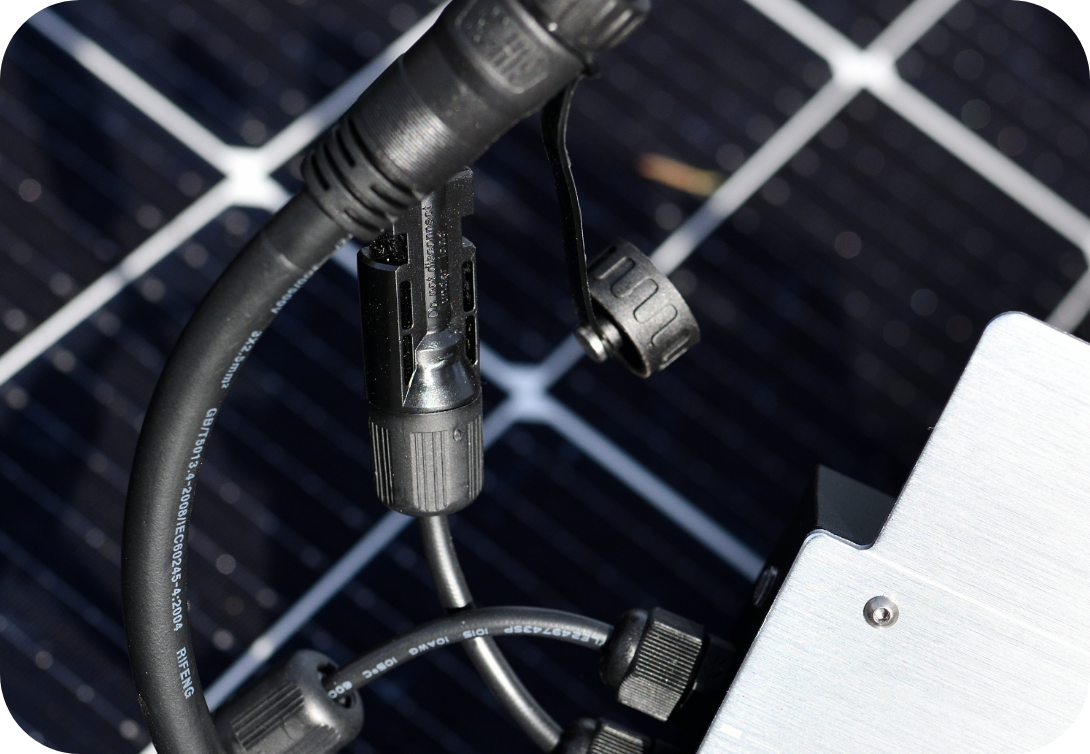
String Inverter
String inverters (also known as central inverters) and best for more simple solar systems. With a string inverter, groups of solar panels are connected to a ‘string.’ Several strings can be connected to one inverter. Energy flows from the panels to the inverter, which changes DC electricity into AC electricity before powering your home. String inverters are easy to manage because they’re often located in a home’s garage or basement, making them easily accessible. They’re also cheaper than other inverters because only one inverter is needed to accommodate multiple strings of panels.
A disadvantage of string inverters is that when one panel underperforms, it can affect the whole string of panels. Due to the inability to optimize each panel’s performance, string inverters are unsuitable for roofs with regular shading.
Micro-Inverters
Small inverters are installed next to every solar panel with a micro-inverter system. Unlike string inverters, where power flows from every panel to one inverter before converting, micro-inverter systems convert DC electricity to AC electricity at each panel. Micro-inverters are best for houses with more complex panel designs or homes with regular shading, as the system maximizes each panel’s performance to reduce shading effects.
Because each panel has its own inverter, micro-inverters make it easier to expand your system. String inverters are often sized based on the number of installed panels, which means they can’t handle additional electricity.
The biggest downsides of choosing micro-inverters are their price and maintenance. They’re more expensive than string inverters and are more challenging to maintain because they’re located on the roof.
Power Optimizers
Power optimizers are a mix of string inverters and microinverters. Energy from your solar panels goes to a central inverter like a string inverter, but each panel has an optimizer like microinverters. Power optimizers maximize electric voltage before sending energy to the string inverter. Since each panel’s electrical output is maximized, they reduce shading issues on panels.
Power optimizers are great for roofs with obstructions like gables and chimneys because they’re still able to maximize your system despite these challenges. However, just like microinverters, the biggest downside of power optimizers is their cost and maintenance. They tend to be more expensive than string inverters though they often cost less than microinverters. Maintenance is also more difficult because they’re on the roof, like microinverters.
Hybrid Inverter
A hybrid inverter has the advantage of being able to convert electricity in both directions. It can convert DC electricity from solar panels into AC power and AC power from the grid into DC energy for charging electric cars or solar batteries.
Hybrid inverters are popular among homeowners who want energy backup options because you can install them like regular inverters. However, you don’t collect additional costs when adding a battery to your solar system. After you install the battery, you can charge it with grid power and store it when solar power isn’t meeting all of your energy needs.
Disadvantages of hybrid inverters are their price and the types of roofs they can be used on. They’re more expensive than string inverters and aren’t ideal for roofs with complicated panel designs or areas with a lot of shade.
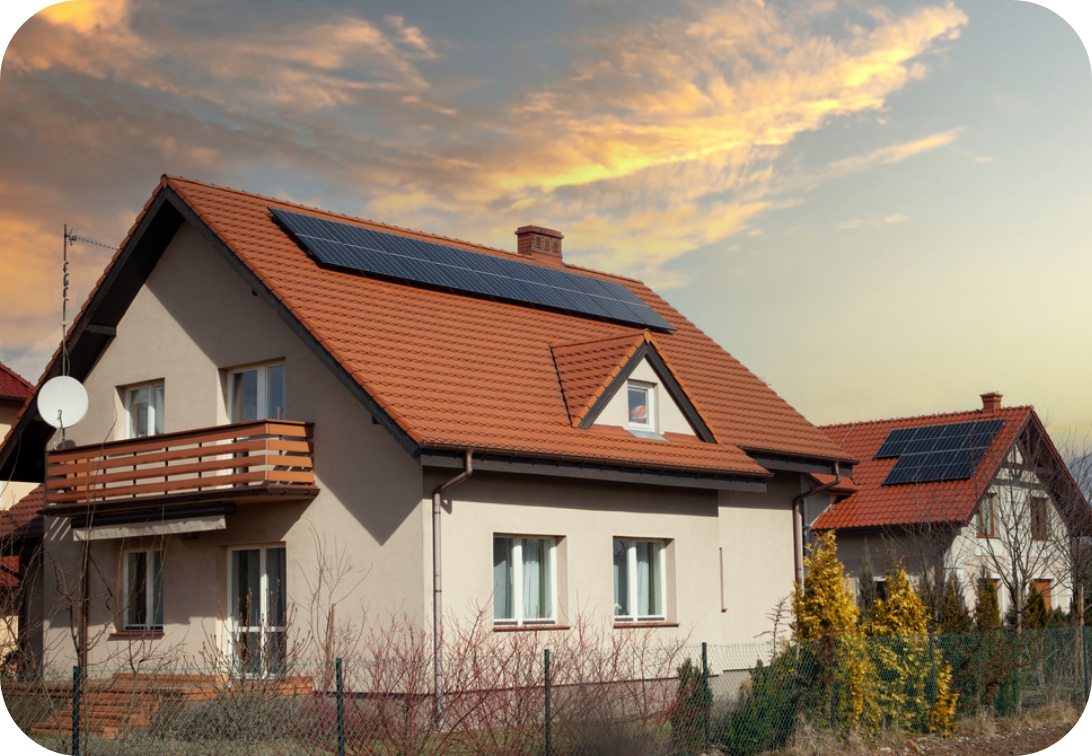
Efficiency & Sizing
Solar power inverters help your solar system be more efficient. Some energy is lost in the form of heat when inverters convert DC to AC electricity. Investing in high-quality solar power inverters will help your system be more efficient because they convert more electricity and suffer fewer conversion losses. Inverter quality varies depending on the brand, but the highest-quality inverters are usually 97% to 99% efficient and have minimal energy loss.
Many people get confused when deciding what size solar power inverter is best. It’s often cheaper to choose inverters with a max input power lower than the panel’s maximum output. We recommend talking with a solar expert who can walk you through the entire process and help you find the right size solar inverter for your system.
Clipping
Choosing a solar power inverter that handles less power than the maximum amount of energy generated by panels is usually more cost-effective. However, this can lead to ‘clipping,’ which means excess energy produced by solar panels is lost to the system. Even so, it makes sense to discard this extra electricity because solar panels rarely produce their maximum output.
What Is The Cost Of Solar Power Inverters?
Determining the price of solar power inverters can be difficult because each system is different. The cost of your inverter depends on the entire system, and the size can vary based on your energy needs.
On average, string inverters usually cost between $1,000 and $2,000. For a similar-sized system, a microinverter can cost up to $1000 more than a string inverter. Power optimizers usually cost between $50 to $200 per panel, though you don’t have to add an optimizer to each panel. You’ll also need to purchase an inverter to which they’ll be connected. Hybrid inverters cost between $1,000 to $3,000. These prices can vary based on the seller, your system’s size, your area’s regulations, etc.
Some cities or residential areas have specific rules regarding solar energy usage. These rules are essential for determining what kind of system you can install and which type of solar power inverter is best. An experienced solar installer knows these regulations and rules related to net metering.
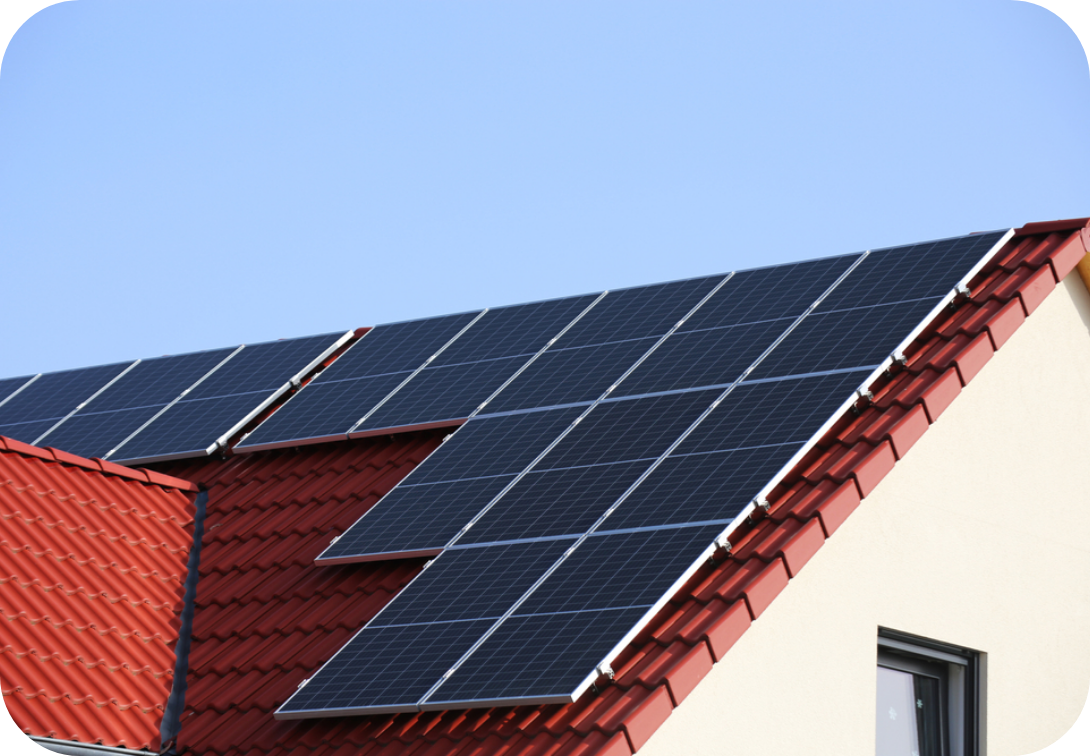
How Long Will My Solar Power Inverter Last?
Depending on the type of inverter you use, its lifespan may fluctuate. Here’s what you can expect based on which type of inverter you install on your home.
Lifespan of String Inverters
String inverters typically have a lifespan of anywhere from 10 to 15 years under normal uses and circumstances. However, when properly mounted on your roof and with regular, thorough maintenance, a string inverter can often last up to two decades.
Lifespan of Micro-Inverters and Power Optimizers
Because micro-inverters and power optimizers are relatively new, there is less information about their expected lifespan. However, manufacturers believe their products will last longer than the 20 to 25-year warranties they provide.
Lifespan of Hybrid Inverters
Since hybrid inverters are similar to string inverters, under typical use, proper installation, and maintenance, a hybrid inverter will usually last between 10-15 years for most homes.
Finding the Ideal Solar System
If you’re ready to start building a solar system for your home and aren’t sure which solar power inverter to get, you can start by using our free quote tool. By answering a few simple questions, we can help you get a rough estimate of how much a solar system will cost for your home. We can also connect you with a solar expert to guide you through the process. See how Axia Solar can help you design a system that puts you in control of your energy costs!
Solar Inverter FAQs
If you still have questions or concerns about solar energy, check out the answers to our customers’ most frequently asked questions below.
The answer to that question depends on a variety of factors including how big a solar system is being installed, how much sun the panels will receive throughout the day and available space for the inverter installation. Your solar provider will be able to recommend an appropriate inverter for your home and system.